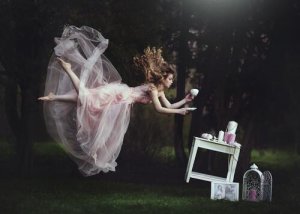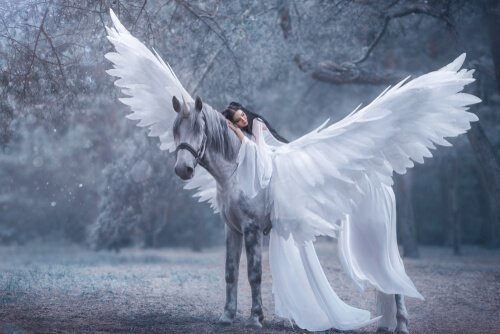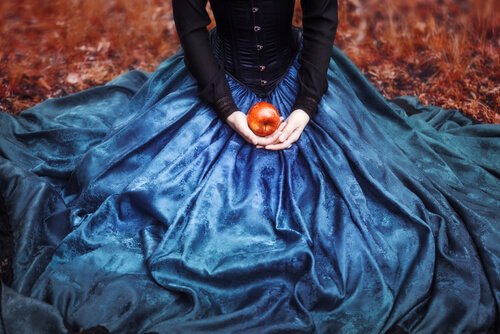Fairies and Witches: Female Stereotypes in Fairytales

Traditional children’s literature represents a sexist view of reality. The fairies and witches we see in them are some of the best examples, especially in traditional children’s stories and movies with female protagonists. In that particular genre, boys and girls have a strong emotional connection to the stories and take the story’s message to heart.
While some modern stories are more contemporary, others have proven to be closed off, unchangeable, sexist, and discriminatory. Let’s delve a little deeper into this.
The implications of fairies and witches
Stories are often a reflection of people’s culture and worldview. These fairytales, in particular, illustrate the idea that men are better than women. In these types of stories, the gender roles that men and women take on have a strong influence on how children see themselves and the world.
In fairytales, women are often represented as either fairies or witches. Although they’re different, they all tend to have some kind of magic power or skill. Fairies are beautiful and kind, while witches are ugly and solitary.

Women have a secondary role in fairytales. They’re relegated to the home, raising children, and taking care of everyone. Their main purpose in fairytales is to dedicate their lives to serving others. Their only goal is to get married.
Symbols of gender roles in fairytales
When the characterization and distinction of characters depend primarily on the sex (female or male), the message about values leads to different sexual roles and functions that are often completely opposing.
Turin (1995) analyzed some of the most representative symbols in fairytales:
- Glasses: male characters don’t tend to use glasses. Glasses usually symbolize wisdom in the face of beauty.
- Household items (handkerchief, apron, mop, broom, etc.): these symbolize the perfect housewife and mother who dedicates her life and time exclusively to her household chores.
- Windows: fairies and princesses tend to hide from the world around them, which signifies apathy and impassivity.
Male characters, on the other hand, are usually strong and brave. If they’re butlers or servants, they symbolize submission. So why don’t you ever see male characters doing household chores in spite of the fact that they’re strong or brave?
Fairytales
Classic tales like Cinderella, Snow White, and Sleeping Beauty are some examples of stories in which all the princesses and fairies are beautiful. Their only job is to do housework and none of them have a social life. In these stories, ugliness is always related to evilness. Most of the conflict is due to jealousy and the fight over who is more beautiful and who gets the prince.
Fairies and witches portray this idea of the “perfect” housewife as if it were a gift or some kind of ability that only women have. These stereotypical values devalue women’s work and make it hard to educate people about gender equality.

These representations of women only serve to perpetuate the tired old ideas that society has about gender roles. It feeds the system that rewards some behaviors and punishes others.
In fact, nowadays, these kinds of ideas are becoming obsolete in the young generation. Nevertheless, it’s important to keep working on other ingrained ideas and stereotypes such as good vs. evil, the value of work, the value of respect, friendship, etc.
Traditional children’s literature represents a sexist view of reality. The fairies and witches we see in them are some of the best examples, especially in traditional children’s stories and movies with female protagonists. In that particular genre, boys and girls have a strong emotional connection to the stories and take the story’s message to heart.
While some modern stories are more contemporary, others have proven to be closed off, unchangeable, sexist, and discriminatory. Let’s delve a little deeper into this.
The implications of fairies and witches
Stories are often a reflection of people’s culture and worldview. These fairytales, in particular, illustrate the idea that men are better than women. In these types of stories, the gender roles that men and women take on have a strong influence on how children see themselves and the world.
In fairytales, women are often represented as either fairies or witches. Although they’re different, they all tend to have some kind of magic power or skill. Fairies are beautiful and kind, while witches are ugly and solitary.

Women have a secondary role in fairytales. They’re relegated to the home, raising children, and taking care of everyone. Their main purpose in fairytales is to dedicate their lives to serving others. Their only goal is to get married.
Symbols of gender roles in fairytales
When the characterization and distinction of characters depend primarily on the sex (female or male), the message about values leads to different sexual roles and functions that are often completely opposing.
Turin (1995) analyzed some of the most representative symbols in fairytales:
- Glasses: male characters don’t tend to use glasses. Glasses usually symbolize wisdom in the face of beauty.
- Household items (handkerchief, apron, mop, broom, etc.): these symbolize the perfect housewife and mother who dedicates her life and time exclusively to her household chores.
- Windows: fairies and princesses tend to hide from the world around them, which signifies apathy and impassivity.
Male characters, on the other hand, are usually strong and brave. If they’re butlers or servants, they symbolize submission. So why don’t you ever see male characters doing household chores in spite of the fact that they’re strong or brave?
Fairytales
Classic tales like Cinderella, Snow White, and Sleeping Beauty are some examples of stories in which all the princesses and fairies are beautiful. Their only job is to do housework and none of them have a social life. In these stories, ugliness is always related to evilness. Most of the conflict is due to jealousy and the fight over who is more beautiful and who gets the prince.
Fairies and witches portray this idea of the “perfect” housewife as if it were a gift or some kind of ability that only women have. These stereotypical values devalue women’s work and make it hard to educate people about gender equality.

These representations of women only serve to perpetuate the tired old ideas that society has about gender roles. It feeds the system that rewards some behaviors and punishes others.
In fact, nowadays, these kinds of ideas are becoming obsolete in the young generation. Nevertheless, it’s important to keep working on other ingrained ideas and stereotypes such as good vs. evil, the value of work, the value of respect, friendship, etc.
All cited sources were thoroughly reviewed by our team to ensure their quality, reliability, currency, and validity. The bibliography of this article was considered reliable and of academic or scientific accuracy.
Laínez, C.M. (2016). Los estereotipos sociales de la mujer y la familia durante el franquismo.
López, A. (s.f). Coeducación y estereotipos de género en la literatura infantil.
This text is provided for informational purposes only and does not replace consultation with a professional. If in doubt, consult your specialist.







